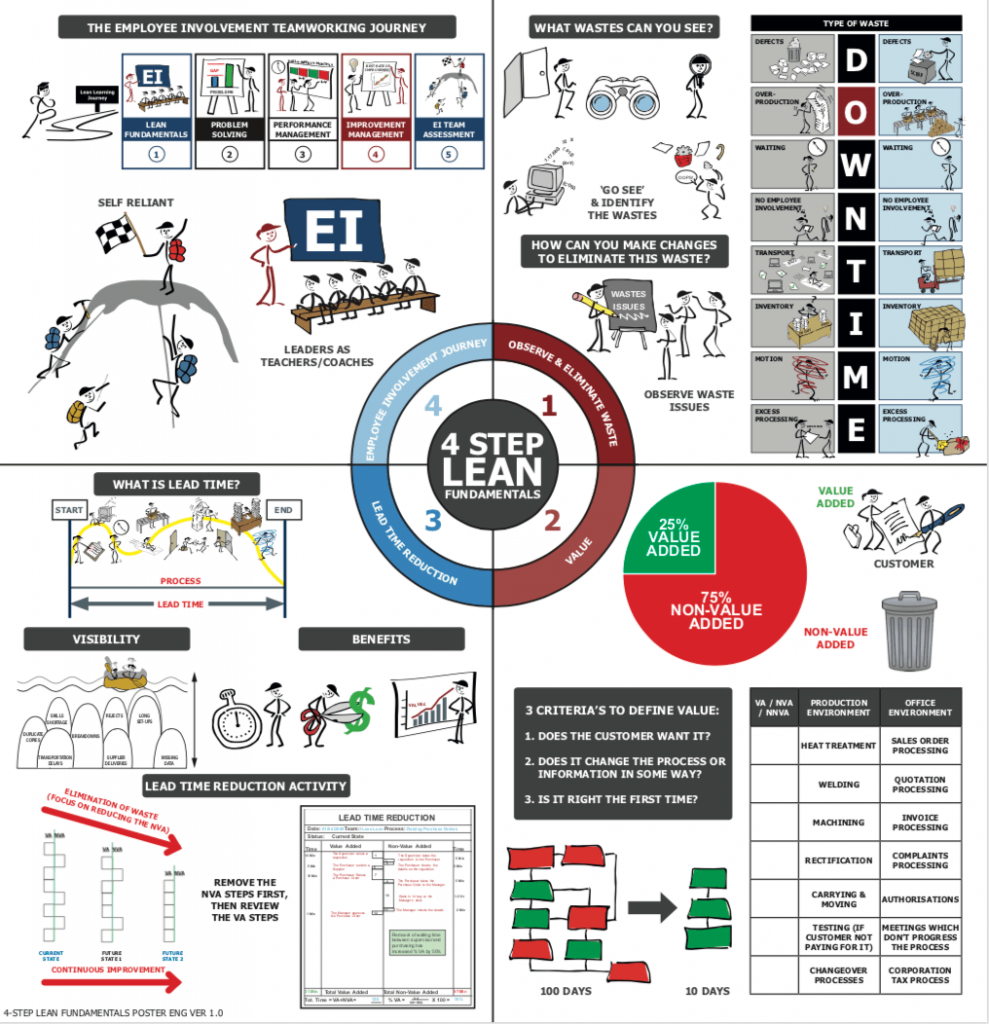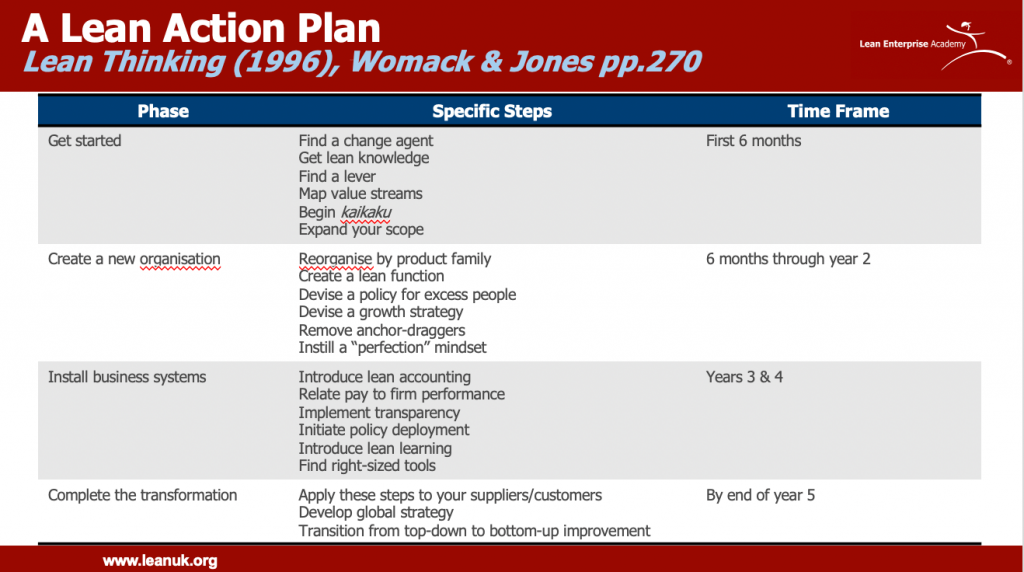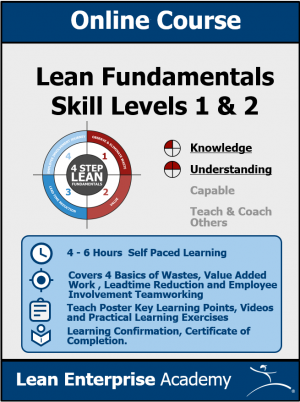Over the last 25 years, Dan Jones has asked me to go and look at how lean thinking can be applied to a whole host of organisational situations. Lean fundamentals can be applied at the frontier, in a range of different situations. Initially we looked at manufacturing operations beyond automotive. Then we researched and helped retailers, grocery distribution, healthcare, FMCG, construction etc. Lean is much more than operations and we apply it to organise and manage customer relations, the supply chain and product development as well. More recently we have been working in environments as diverse as software development and making flu vaccines. The striking realisation is that lean thinking applies everywhere. To do so successfully – for people to learn to see for themselves – one has to “trust the process” and follow the principles.
A new frontier – shopping centres
Last week I spent three days at two shopping centres. Whilst several retailers have launched their own continuous improvement “programmes” I was interested to learn if lean thinking and practice apply to the maintenance of the shopping centre itself. When we start any journey, I am always unsure. Will the principles and practices be applicable this time? If they are, will management and team members be able to see the benefits? Will they think it worth the effort?
We have learned that the key to engagement lies in the planning and delivery of each intervention. From teaching and coaching to developing and trying experiments that help articulate the lean principles and practices. For our gemba activity we agree on the processes to observe and how we will do that. We agree on what to teach, in what sequence and in what amount so that the teams develop insight. Small groups, close to the work look at key end to end processes that make a difference for customers. We look at the work and the issues team members have. How can we work together to make the work easier? We look at how to manage the work and identify and resolve problems. We expose the team to lean fundamentals by asking and agreeing 5W2H – the why, what, where, when, who, how, how much? of the situation in question.
What are Lean Fundamentals?
There are lots of approaches to improvement and I am sure there are nuances in emphasis, sequence, and language because of the specific situation. However, there are some fundamentals. Fundamentals are basic or essential.
- Observe and eliminate waste – lean can only be learned by doing, so let’s go and see and understand how we can make changes to eliminate the waste we find.
- Understand value through the eyes of the customer.
- Try to make value flow, at the pull of customer demand.
- Involve everyone in the journey – respect and challenge team members through teamwork, problem solving, building in quality, managing performance and continuous improvement (kaizen.)

What is the problem to solve, the gap to close?
Providing context for lean thinking and practice is essential. Lean thinkers know the famous Taiichi Ohno quote “No problems is a problem.” It is fundamental to agree on the gap(s) to close. In each area we observed, the team defined the gap(s) to close in simple, measurable terms. For example, reducing cost by £X per year translates to saving 28 minutes cleaning the washrooms per day whilst maintaining the cleanliness standards. The gap needs to be easy to articulate and be meaningful for the team members.
What did we see?
In short, lots of opportunities! The team identified examples of overproduction. Cleaners worked in batches, doing all the cleaning of a particular type, before moving on to the next cleaning type. This meant that when cleaning a washroom they wiped a particular surface with one type of cleaner in a cubicle before moving onto the next cubicle and doing the same process. Each are was well cleaned but the lead time was much longer than the cleaning tasks. The result was that large areas of the washroom needed to be closed at any one time. This looked efficient for the cleaner but was inefficient for the whole system. It caused other wastes such as:
- Customers waiting longer for washrooms than necessary.
- Excess motion in the cleaning tasks.
- Extra transportation of cleaning materials.
- Over processing/over cleaning steps.
The communal eating cleaning team observed similar batching as team members collected meal trays, emptied refuse bins and so on.
With clear problems to solve, the team discussed how these would usually be solved. Their discussions highlight the need for common robust problem solving processes used by the front line or by management. In turn, this leads the team to think about the core capabilities required to do and improve the value creating work. The team reflected on how they manage the work. They highlighted opportunities to improve the visibility of status and be able to see whether they are behind or ahead. They discussed the appropriate use of standardisation – we can’t improve (conduct kaizen) without a standard upon which to improve from.
Can lean apply in the maintenance of a shopping centre?
This is the £64,000 question. The conclusion is “of course.” But revolutions in business don’t just happen. There must be an action plan managers can deploy. In Lean Thinking (pp.246), Jim Womack and Dan Jones outlined a number of steps to planning out the change.

Over the last 30 years we’ve learned that the first three of these steps are “fundamental.” The change agent must be internal. Getting the knowledge can be external at first, but that knowledge must be quickly embedded into line management. Each organisation needs to think about the learning process to enable that to happen.
In the 2020’s there is little need to create a crisis. It feels like we have never had so much disruption in our lives. But what is key is to agree the problem(s) to solve, the gap(s_ to close. Without such agreement it becomes difficult to improve an important and visible activity. It becomes difficult to think through the 5 dimensions of lean transformation we know are fundamental to being effective when developing lean thinking and practice.
Conclusions
In Lean Thinking (pp.337) Jim Womack and Dan Jones argue that “recessions are precious things because they shake conventional wisdom, even complacent lean wisdom, and motivate managers to make hard choices.” Almost 30 years later, the necessary knowledge is present. Indeed, we’ve lived through the recessions of the early 1990’s and the early 2000’s. It was fairly bumpy during the 2008 financial crisis, and we have just witnessed the disruption of a global pandemic.
As we face stagnant productivity, inflation and interest rate rises, supply shortages and an energy crisis (in terms of both cost and a transition to greener forms) and a war on our doorstep there’s probably never been a better time to apply lean thinking and practice. There’s really no excuse for failing to act.
P.S. If you would like to know more about learning lean fundamentals and applying them to your situation please take a look at our Lean Fundamentals materials on our Lean Learning Platform.
